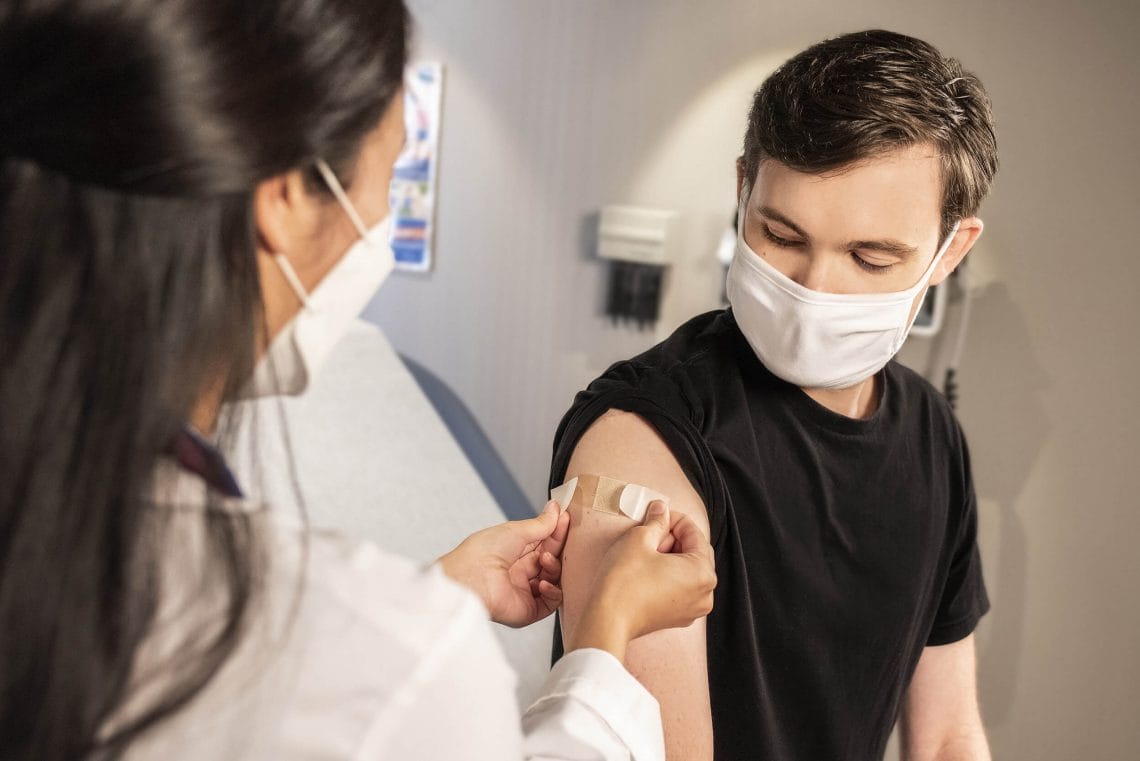Nearly two years into the COVID-19 pandemic, it can feel like there’s new developments and updated guidance every week. Consider the last few months of 2021 alone, which saw the first full FDA approval of a COVID-19 vaccine, authorization of a vaccine for the 5-11 age group, two different pills to treat COVID-19, and the omicron variant spreading rapidly and sending cases soaring to new heights worldwide.
What isn’t news is that we’ve experienced high levels of uncertainty and instability throughout the pandemic, which makes decision-making difficult. It’s hard to make good choices when the information we use to make those choices keeps changing. As Richard Thaler often says, the problem isn’t that people are dumb, it’s that the world is hard. This is true both in and out of a pandemic, and it’s why behavioral scientists focus on making processes, systems, and decisions easier to navigate.
Behavioral science provides a crucial framework for understanding human responses to uncertainty. When it comes to uncertainty regarding COVID-19 vaccines, there are four “cognitive pitfalls” in particular that are likely to affect decision-making. Fortunately, healthcare practitioners and others who communicate about vaccines can help people overcome these pitfalls, to protect themselves, their families, and their communities from COVID-19. We’ve been working with a variety of partners, including community-based organizations and community health workers, to incorporate these behavioral approaches into their vaccine outreach.
Ambiguity Aversion
Ambiguity aversion is the tendency to favor known over unknown risks. Humans prefer certainty, but among outcomes involving some level of risk, we’re attracted to familiar options and odds.
For example, two years into the pandemic, the virus may feel like a familiar enemy. By comparison, COVID-19 vaccines became available to the general public in the U.S. a year or more later, with risks and benefits that may feel more novel. In surveys, unvaccinated individuals consistently report concern over unknown long-term side effects of vaccines as a principal driver of hesitancy. In effect, many unvaccinated Americans seem to opt for the devil they know (COVID-19) over the devil they don’t (vaccines).
With that in mind, public health messages could contrast the fluid nature of a constantly evolving virus against increasingly widespread and familiar vaccines–while of course still being transparent about what we know and are still learning about side effects. And when communicating new developments related to the virus or the vaccines, studies suggest one way to mitigate people’s anxiety without conveying a false sense of certainty is to explicitly normalize uncertainty–in effect, tell people that, while there’s a lot we may not know, that’s not at all unusual and in fact to be expected.
Possibility and Certainty Effects
How much would you pay to shift the odds of rain on your wedding day from 1% to 0%? Now how about from 51% to 50%? Even though these changes both involve a difference of 1%, if your answer to the two hypotheticals was different, it may be because your judgment is swayed by what’s known as the possibility effect and the certainty effect. If instead of brains we had supercomputers in our heads, the way we compared those two sets of risks would have the same impact on our cost/benefit analysis. But humans aren’t robots, and we’re very sensitive to changes that take an outcome from impossible to possible, or from certain to highly probable–so we end up putting a far greater weight on that shift from 1% to 0%.
How does this thinking apply to the pandemic? Headlines in 2020 touting 95% efficacy of vaccines, rather than building confidence about a highly effective vaccine, may have brought to mind the question “Even if I get vaccinated, I can still get this disease?” And data from May showing that 99% of Americans dying from COVID were unvaccinated may also have led people into possibility-effect thinking: “It’s still possible to die from COVID even if I’m vaccinated?” These reactions are probably not what the writers of these headlines intended, but it’s the way many likely interpreted them nevertheless. Better messages could speak in more certain, less probabilistic, terms: Vaccines have saved many thousands of lives, while COVID has killed hundreds of thousands in the U.S. alone.
These two tendencies—ambiguity aversion and the possibility and certainty effects—can cause people to avoid getting life-saving vaccines. With this knowledge in mind, communications and outreach about COVID vaccines can assuage concerns and help more people get vaccinated.
Stay tuned for the second post in this series to learn about two more cognitive pitfalls that affect decision-making during times of uncertainty.



